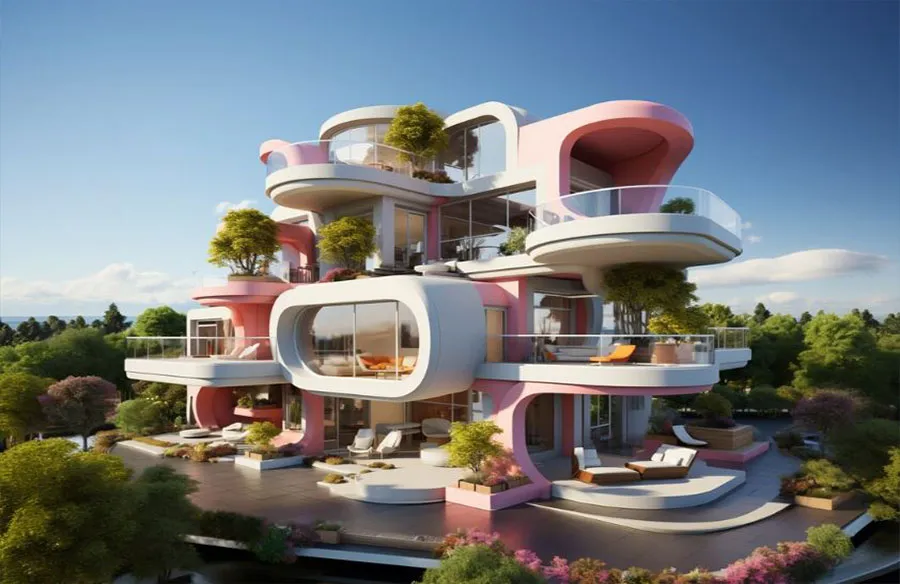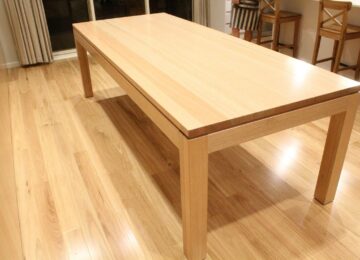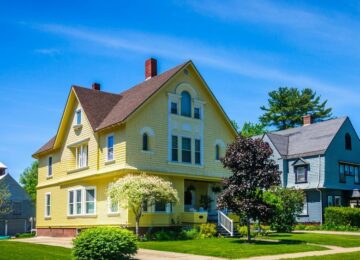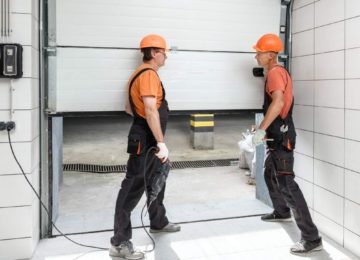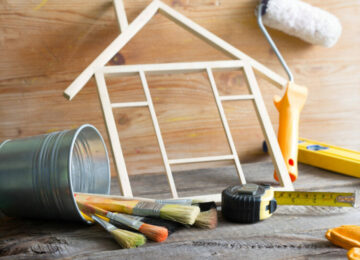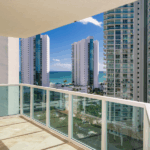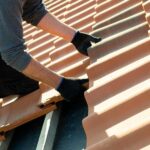As you contemplate the evolution of home building, envision a landscape where sustainability meets cutting-edge technology to redefine the very essence of residential living. From the integration of eco-conscious materials to the seamless fusion of smart home innovations, the horizon of possibilities seems limitless. Imagine a world where your home adapts to your needs effortlessly, offering a harmonious blend of functionality and environmental stewardship. With each brick laid and every wire connected, the future of home construction beckons with promises of a greener, smarter, and more tailored abode awaiting you.
Sustainable Materials
As builders explore the future of home construction, incorporating sustainable materials has emerged as a pivotal focus, revolutionizing the industry’s approach to environmental responsibility.
One key aspect of this shift is the use of recyclable insulation. Traditional insulation materials can be harmful to the environment, but recyclable insulation offers a greener alternative. Made from recycled materials like denim or cellulose, these insulating products not only reduce waste but also provide excellent thermal efficiency for homes.
Another vital element in sustainable home building is the application of eco-friendly paint. Conventional paints contain volatile organic compounds (VOCs) that can release harmful toxins into the air, impacting indoor air quality and the environment. Eco-friendly paints, on the other hand, are low in VOCs and made from natural ingredients, making them a healthier choice for both occupants and the planet.
Smart Home Technology
Exploring the future of home construction, a cutting-edge aspect gaining momentum is the integration of smart home technology, elevating living spaces with innovative capabilities and convenience.
Imagine walking into your home and simply uttering commands to adjust the lighting, set the thermostat, or play your favorite music—all made possible through voice-activated assistants like Amazon’s Alexa or Google Home. These voice-controlled devices are revolutionizing the way we interact with our homes, offering hands-free control and seamless integration of various smart devices.
Moreover, smart home technology extends beyond convenience to enhance energy efficiency. Energy monitoring systems allow homeowners to track their energy consumption in real-time, pinpointing areas where they can reduce waste and save on utility bills.
From smart thermostats that learn your preferences to lighting systems that adjust based on natural light levels, these technologies not only streamline daily tasks but also contribute to a more sustainable lifestyle.
Embracing smart home innovations isn’t just about keeping up with trends, but about creating living spaces that are intuitive, efficient, and environmentally conscious.
Modular Construction
Imagine constructing your future home like a puzzle, where each piece fits seamlessly together to create a customized living space tailored to your preferences and needs. This is the essence of modular construction. With space-saving layouts and customizable interiors, modular homes offer a unique blend of practicality and personalization.
One of the key advantages of modular construction is rapid assembly. The prefabricated modules are constructed off-site, allowing for quick on-site assembly. This not only reduces construction time to a large extent but also minimizes the impact on the environment.
Moreover, modular construction provides cost-effective solutions. The controlled factory setting ensures efficient material usage and labor, leading to cost savings for homeowners.
The ability to customize your home’s layout and design while benefiting from fast construction and cost savings makes modular construction an attractive option for modern homeowners. Whether you’re looking for a small urban dwelling or a spacious countryside retreat, modular construction offers a versatile and efficient way to bring your dream home to life.
Energy-Efficient Designs
Optimize your home’s sustainability with innovative energy-efficient designs that revolutionize the way we think about living spaces. Incorporating passive solar elements into your home’s design can greatly reduce your energy consumption. By strategically placing windows and utilizing materials that absorb and retain heat from the sun, you can passively heat your home during the winter months, cutting down on the need for artificial heating.
In addition to passive solar techniques, insulation plays an important role in maintaining energy efficiency. Proper insulation techniques, such as using high-quality materials and sealing any gaps or cracks, can prevent heat loss in the winter and keep your home cool in the summer. This not only reduces your reliance on heating and cooling systems but also helps lower your energy bills.
Prefabricated Homes
Embracing the future of home building means considering the innovative approach of prefabricated homes, where efficiency and sustainability meet modern design concepts. Prefabricated homes offer cost-effective solutions by streamlining the construction process, reducing waste, and utilizing materials more efficiently. These homes aren’t only quick to build but also environmentally friendly, making them a popular choice for those looking to reduce their carbon footprint.
One of the significant advantages of prefabricated homes is the ability to have customizable designs. From selecting floor plans to choosing finishes, homeowners have the flexibility to tailor their living space to their preferences. This level of customization allows for a more personalized touch, creating a home that truly reflects the homeowner’s style and needs.
Moreover, prefabricated homes are often built with energy efficiency in mind, incorporating features like solar panels, high-quality insulation, and energy-efficient appliances. By combining innovative design with sustainable practices, prefabricated homes represent a forward-thinking approach to modern living.
3D Printing in Construction
Prefabricated homes have revolutionized the construction industry, and now, the advent of 3D printing in construction is poised to redefine the way we build our living spaces. Imagine a world where customizable structures can be printed layer by layer, offering a level of personalization never seen before.
Construction automation through 3D printing allows for intricate designs to be executed with precision and speed, reducing labor costs and construction time to a considerable extent. The beauty of 3D printing lies in its ability to create complex shapes and structures that traditional construction methods struggle to achieve efficiently.
With this technology, architects and designers can push the boundaries of what’s possible, creating futuristic and sustainable buildings that not only look stunning but also function seamlessly. Furthermore, 3D printing in construction opens up opportunities for more environmentally friendly practices by minimizing material waste and energy consumption.
As this innovative technology continues to evolve, we can expect to see a shift towards more sustainable and efficient building processes, catering to the growing demand for smart and eco-conscious living spaces.
Net-Zero Energy Buildings
In the world of modern architecture, the concept of Net-Zero Energy Buildings is gaining momentum as a sustainable solution for reducing energy consumption and environmental impact. These innovative structures, often designed following Passive House principles, are meticulously crafted to minimize energy waste and maximize efficiency.
By combining advanced insulation, airtight construction, and high-performance windows, Passive Houses notably decrease the need for heating and cooling. However, what truly sets Net-Zero Energy Buildings apart is their utilization of renewable energy sources. Solar panels, wind turbines, and geothermal systems are integrated into the design to generate as much energy as the building consumes, resulting in a net-zero energy footprint.
Embracing this approach not only benefits the environment but also offers long-term cost savings for homeowners. The shift towards Net-Zero Energy Buildings reflects a growing awareness of the importance of sustainable living practices.
As technology continues to evolve, these energy-efficient homes are becoming more attainable and desirable, paving the way for a greener future in home construction.
Wellness-Focused Design
Crafting living spaces that prioritize holistic well-being and health is a defining trend in contemporary home design. Biophilic interiors, which seamlessly blend nature into living spaces, are becoming increasingly popular. These interiors incorporate elements like natural light, indoor plants, and natural materials to create a sense of tranquility and connection to the outdoors.
Mindful architecture plays an essential role in wellness-focused design by emphasizing sustainability and creating spaces that promote mental and physical well-being. Architects are now integrating features such as meditation rooms, yoga spaces, and green roofs into homes to encourage relaxation, mindfulness, and a healthier lifestyle.
Virtual Reality in Home Design
Embracing virtual reality technology revolutionizes the way home design is envisioned and experienced, offering a dynamic and immersive platform for exploring and customizing living spaces. Virtual reality (VR) in home design enhances the user experience by allowing individuals to virtually walk through and interact with their future homes before construction even begins. This technology provides a realistic sense of scale, proportion, and spatial layout, giving homeowners a deeper understanding of how different design elements will work together.
Moreover, VR enables unparalleled design customization, empowering users to make real-time changes to colors, materials, furniture placement, and more with just a few clicks. This level of customization fosters creativity and enables homeowners to tailor their living spaces to their unique preferences and lifestyle needs.
Accessory Dwelling Units
Discover a new dimension of living possibilities with the innovative concept of Accessory Dwelling Units (ADUs).
ADUs, also known as granny flats or backyard studios, are gaining popularity as a flexible housing solution. These tiny homes offer a range of benefits, from providing affordable housing options to increasing property value.
One of the key advantages of ADUs is their versatility. Whether you’re looking to downsize, accommodate aging parents, or generate rental income, these compact living spaces can be tailored to suit your needs.
However, it’s important to be aware of ADU regulations in your area, as they can vary significantly from one location to another.
Looking for some excellent homes ready to move into? Look at what is available on https://srhomes.com.

